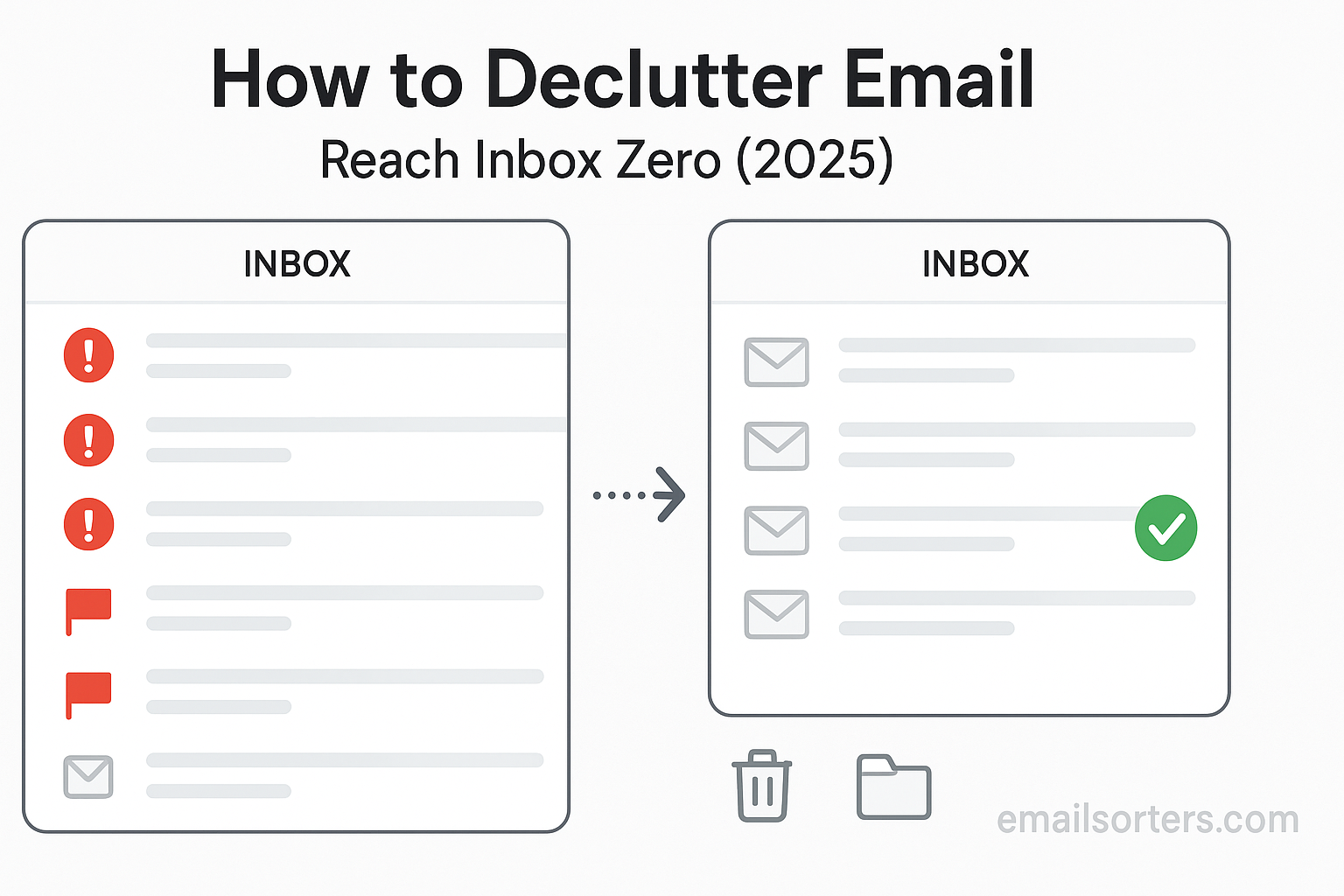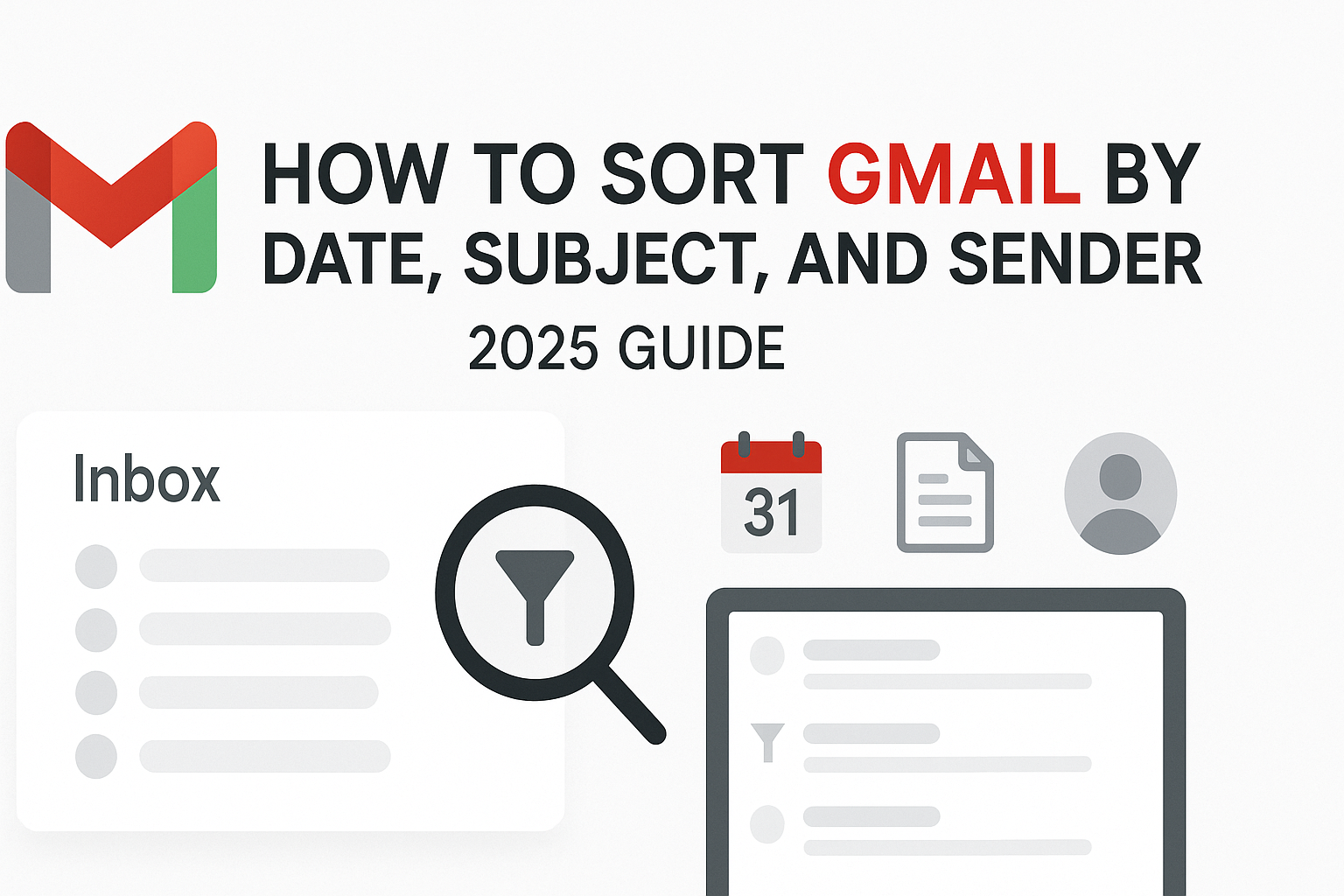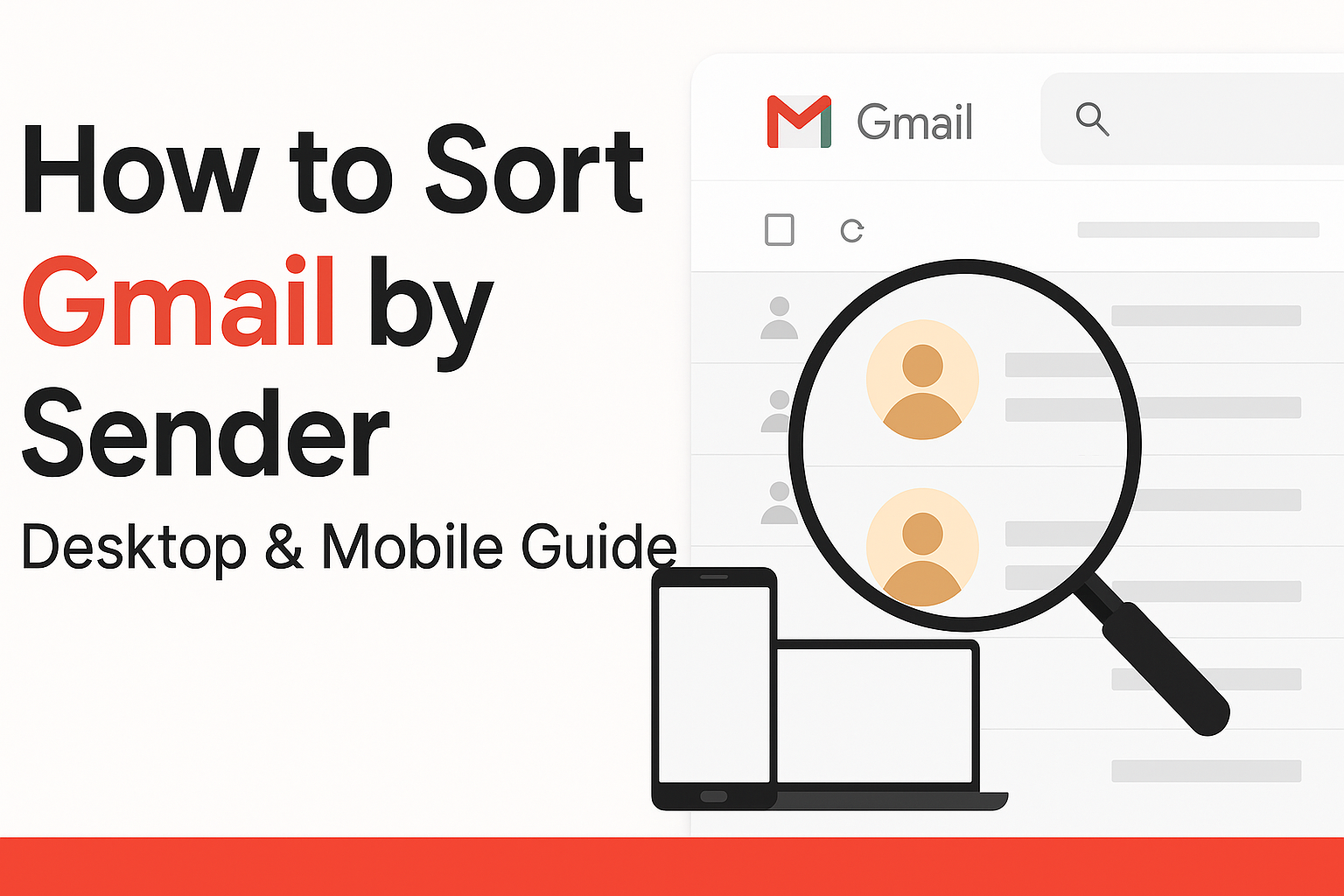How to declutter email and reach Inbox Zero, it’s a challenge almost every professional faces in 2025. Email is still one of the most important tools for work, but it’s also one of the biggest sources of stress. The average professional now receives hundreds of emails per week, most of which are promotions, updates, or notifications that don’t need immediate action. The result? A cluttered inbox and a constant sense of overwhelm.
The problem goes beyond unread messages. A messy inbox creates mental weight. Each notification feels like something unfinished, and over time, those reminders pile up. The clutter doesn’t just slow you down, it drains energy and focus. Every time you open your inbox, you’re forced to decide: read, delete, ignore, or save for later. Those tiny decisions build up into fatigue and make it easy to miss what’s truly important.
That’s why a new approach is needed. Inbox hygiene means clearing the digital mess so you can work smarter. The most popular method? Inbox Zero. It’s not a myth or an unreachable goal, it’s a practical way to reset your inbox, take back control of your time, and reduce the stress of constant notifications.
In this guide, you’ll learn exactly how Inbox Zero works, plus tools, tips, and strategies to actually stick with it. Whether you’re hearing about it for the first time or you’ve tried and struggled before, this is your chance to start fresh. Because here’s the truth: your inbox shouldn’t be your to-do list. It should be a clear, manageable space that supports your productivity.
What Is Inbox Zero and Why It Still Matters
Inbox Zero is not about keeping your inbox completely empty at all times. It’s a method of email management that aims to reduce the number of unread or unprocessed messages to zero; at regular, scheduled times. The concept was popularized in the early 2000s by productivity expert Merlin Mann, and it has stayed relevant because the core idea is simple: your inbox is not a storage unit, it’s a flow.
According to Inbox Zero, the goal isn’t perfection; it’s clarity. Inbox Zero is about making quick decisions on every message and getting them out of your way. That might mean replying, deleting, archiving, forwarding, or tagging for follow-up. The point is to stop letting emails sit idle and clog your brain.
In 2025, Inbox Zero is more important than ever. With so many platforms funneling notifications and alerts into your email; bank statements, work updates, school news, social media; it’s easy to get overwhelmed. Having a clear system like Inbox Zero gives you back control.
One reason the method continues to gain followers is that it scales well. Whether you’re managing a personal Gmail account or a corporate Outlook inbox, the same principle applies: don’t let your inbox become a storage bin. Instead, turn it into a place where things are processed and moved on.
Achieving Inbox Zero doesn’t mean spending all day answering emails. It means setting up a rhythm where your inbox stays manageable, and you stay mentally clear. You check it on your schedule; not every time a notification dings. And when you do check, you know exactly how to handle each message.
Inbox Zero still matters because email isn’t going away. But the stress around it can. This method is your tool for making email work for you again.
The Psychology of Cluttered Inboxes
There’s more happening in your inbox than just digital communication. Each unread email is a decision waiting to happen. That decision might take a few seconds; reply now or later? Delete or archive? Open or ignore? But those few seconds add up quickly.
Psychologists call this cognitive overload, the mental strain that comes from processing too much information at once. When you open an inbox with 800 unread emails, your brain reacts like it’s facing a mountain. You might feel anxiety, frustration, or guilt. You might even avoid checking email altogether, which only adds to the problem.
The issue isn’t just the number of messages. It’s the feeling of falling behind. A cluttered inbox creates a low-level background stress. It’s always there, nudging at your mind: “You have something to deal with.” That constant stress makes it harder to focus on meaningful tasks.
For many people, inbox clutter becomes emotional. Messages from clients you haven’t replied to. Notifications you feel guilty for ignoring. Emails that remind you of tasks you still haven’t finished. These aren’t just emails; they’re mental clutter.
The good news? Cleaning your inbox can improve more than just your productivity. It improves your mood. When your inbox is under control, your brain feels more relaxed. You’re no longer reacting to every ping or badge count. You’re choosing when and how to manage communication. That shift gives you back a sense of agency.
Inbox Zero offers not just a cleaner inbox; but a calmer mind. When you check your inbox and see only messages that matter, and none waiting endlessly in limbo, it changes your whole mindset about email. It’s not a battle anymore. It becomes a tool.
How to Start Decluttering: First Steps Toward Inbox Zero
Reaching Inbox Zero might sound impossible when you’re staring at thousands of messages. But it doesn’t happen all at once. The trick is to start small; with actions that give you immediate wins. Here are some simple, practical steps to begin clearing your inbox without getting overwhelmed.
- Unsubscribe from unnecessary newsletters
One of the biggest sources of inbox clutter is newsletters you no longer read. Click “unsubscribe” at the bottom of emails that don’t add value anymore. This reduces future clutter and makes your inbox easier to manage. - Archive old messages
If your inbox is filled with months; or years; of old messages, don’t try to sort them all. Archive them in bulk. Archiving keeps them out of sight but still searchable if needed. Start fresh with a cleaner space going forward. - Set up filters and rules
Email platforms like Gmail and Outlook allow you to create rules or filters. You can automatically send promotional emails to a folder, tag certain senders, or move receipts into a label. Automating this sorting process saves time every day. - Mark all as read (when appropriate)
Sometimes, the only realistic move is to mark everything as read. If you’re dealing with thousands of unread emails, and most of them are irrelevant, clear the red badge by marking them read. Then commit to managing new ones properly. - Create simple folders or labels
Don’t overdo it with dozens of folders. Stick to a few categories like “To Respond,” “Waiting,” or “Reference.” This helps you quickly file messages without spending time thinking about where they belong.
These first steps are designed to get your inbox under control. Once the clutter is reduced, it’s much easier to maintain a clean, manageable inbox using the Inbox Zero method.
Using the Best Email Cleaner Apps to Speed Up the Process
Manual cleanup can take hours; sometimes days; if your inbox is badly cluttered. That’s where email cleaner apps come in. These tools help you quickly sort, filter, and delete or archive large volumes of email. They’re especially useful if you’re dealing with years of built-up messages.
Apps like Clean Email, Mailstrom, and Unroll.Me offer features that let you sort messages by sender, category, or age. They also help identify duplicate emails, subscriptions, and junk mail that can be deleted in bulk. These tools aren’t replacements for good habits, but they are great helpers when starting out.
Most cleaner apps provide visual dashboards. They show you how much clutter you have and how much you’ve removed. This makes progress more visible and satisfying. Some even allow batch actions like “unsubscribe and delete all past messages from this sender,” saving hours of manual cleanup.
Using one of these apps is like hiring a digital assistant. You still make the decisions; but the app does the heavy lifting. And when you’re staring at an inbox full of thousands of unread emails, that help makes a real difference.
How AI Email Organizers Are Revolutionizing Inbox Management
Email management in 2025 is changing fast, thanks to artificial intelligence. AI email organizers are not just add-ons; they are becoming built-in features across platforms. These tools help you stay ahead of your inbox by working in the background, learning your habits, and helping you prioritize what matters most.
AI doesn’t just look at subject lines or senders. It analyzes patterns; like how quickly you respond to certain contacts, what kinds of emails you usually archive, and which messages you tend to ignore. From there, it creates a smarter way of sorting your email.
For example, some AI tools automatically move less important emails into a “Low Priority” folder. Others tag messages based on urgency or recommend responses using predictive text. Over time, these systems adapt. They learn how you work and adjust accordingly.
You might already be using an AI feature without realizing it. Microsoft Outlook includes tools that suggest quick replies. Gmail uses machine learning to offer smart replies, categorize promotions, and alert you to emails you’ve forgotten to respond to. Tools like Superhuman and SaneBox take it further with AI-powered triage systems that group similar messages and delay low-priority ones.
This approach cuts down the time spent reviewing every single message. Instead, the system helps surface what really needs attention; messages from your boss, urgent updates, or client requests; while pushing down newsletters, auto-replies, or system notifications.
The point of AI in email isn’t to replace you. It’s to give you back time. When you don’t have to manually review each message, you can spend your energy where it really counts; solving problems, making decisions, and communicating clearly.
Creating a Sustainable Email Workflow
Getting your inbox clean is one thing; keeping it that way is another. If you don’t build a few habits and systems, the clutter will return. That’s why sustainability matters in email management. It’s not about one big cleanup. It’s about setting up a workflow that works for you every day.
Start by scheduling regular email check-in times. Instead of constantly checking messages throughout the day, set aside two or three time blocks. Morning, mid-day, and end-of-day check-ins often work best. This lets you focus on actual work between email sessions.
Batch your replies during those times. Group similar messages; like scheduling requests or status updates; and respond to them in a single sitting. This reduces context switching and increases your speed.
Also, start treating your inbox like an action center; not a holding tank. When you open an email, decide on the spot: respond, file, forward, or archive. The fewer messages you leave “for later,” the easier it is to stay at zero.
Another key part of a sustainable workflow is integrating your email with your calendar or task manager. If a message includes an action item, don’t leave it in your inbox. Create a task or calendar entry for it and then archive the message. That way, your inbox stays focused on communication; not on reminding you what you need to do.
Lastly, give yourself permission to be imperfect. You don’t have to reply instantly or file every message perfectly. Inbox Zero is about control; not perfection. Find a rhythm that works, stick with it, and adjust when needed.
Inbox Zero for Different Email Clients and Platforms
While the Inbox Zero method is universal in its philosophy, how you apply it depends a lot on the platform you’re using. Gmail, Outlook, Apple Mail, and third-party tools all offer different options for email management.
In Gmail, labels and filters are your best friend. You can set filters to auto-label and archive emails from certain senders. The tab system (Primary, Social, Promotions) is a helpful starting point, though many users customize it further. Gmail also supports scheduled send, snooze, and built-in AI tools that flag important emails.
For Outlook, rules and categories offer powerful automation. You can create detailed rules for sorting messages into folders, tagging them, or setting reminders. The “Focused Inbox” helps split essential emails from lower-priority ones. Outlook’s integration with Teams, To Do, and Calendar makes it ideal for professional workflows.
Apple Mail keeps things simple but can be improved with plug-ins. If you use Apple’s Mail app, consider pairing it with tools like Spark or Airmail for more advanced sorting and scheduling options. These apps bring more power without switching platforms.
If you use multiple accounts or platforms, tools like Clean Email or Edison Mail can help you apply Inbox Zero practices across services. They unify your inboxes and offer smart filters and cleanup actions that make managing multiple accounts easier.
No matter which platform you use, the principle is the same: deal with each message only once, use automation where you can, and keep the focus on what matters.
Common Pitfalls and How to Avoid Them
Many people start strong with Inbox Zero, only to fall back into clutter a few weeks later. That’s because it’s easy to make mistakes that seem helpful at first; but end up working against you. Here are the most common pitfalls and how to avoid them.
One of the biggest mistakes is creating too many folders or labels. While organizing is good, over-organizing slows you down. If you have to think too hard about where an email goes, you won’t stick with it. Stick to a few key categories like “Action,” “Waiting,” and “Reference.”
Another problem is being too aggressive in deleting messages. It’s tempting to clear out everything; but don’t delete emails you might need later. Instead, archive them. That way, they’re out of your inbox but still searchable.
Some users also fall into the trap of ignoring maintenance after the first cleanup. You get to Inbox Zero once, but without a system, you end up right back where you started. This is why having a daily or weekly routine matters. It keeps clutter from building up again.
Finally, don’t treat Inbox Zero like a competition. It’s not about being perfect. It’s about feeling in control. Some days your inbox will be messier than others; and that’s okay. What matters is having a clear process you trust and return to.
Inbox Zero works best when it fits into your actual life; not when it adds pressure. Avoid these common traps, and you’ll keep your email under control for the long haul.
Conclusion
The truth about Inbox Zero is that it’s less about the number of emails and more about how you relate to them. It’s not a finish line; it’s a mindset. You don’t have to keep your inbox at zero every hour of the day. You just need to know that every message has been handled or parked with purpose.
When you stop letting your inbox control your time, everything else gets easier. You respond faster. You miss fewer details. You spend less energy worrying about what’s hiding in a pile of unread messages. That kind of clarity is rare; and valuable.
Whether you reach Inbox Zero once a day or once a week, the payoff is real. Less stress. More focus. Better communication. If you’re using smart tools like AI email organizers and cleaner apps, the process becomes faster and less frustrating. The goal isn’t to fight email; it’s to make it work for you again.
Inbox Zero works when it becomes a habit. Start small. Build your system. Keep it simple. And keep coming back to the basics: process, clear, respond, and move on.
FAQs
Is Inbox Zero really possible with work emails?
Yes, but it takes structure. With filters, folders, and regular check-ins, you can keep your inbox from overwhelming you; even in a high-volume environment.
Should I delete or archive old emails?
Archive them. It’s faster, safer, and keeps messages out of sight while still allowing you to search for them later.
How often should I clean my inbox?
Aim for once a day or every other day. The key is consistency, not speed. A few minutes daily is more effective than a few hours once a month.
What’s the best tool to reach Inbox Zero?
The best tool is the one you’ll actually use. Many prefer Clean Email or Mailstrom for deep cleanup, while Gmail and Outlook’s built-in tools are great for daily use.
How do I handle emails I can’t answer right away?
Use folders or labels like “To Reply” or “Waiting.” Move the message there and schedule a time to respond. This keeps your inbox clear and your tasks organized.




